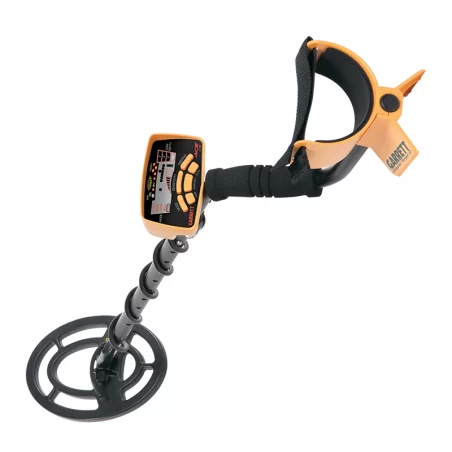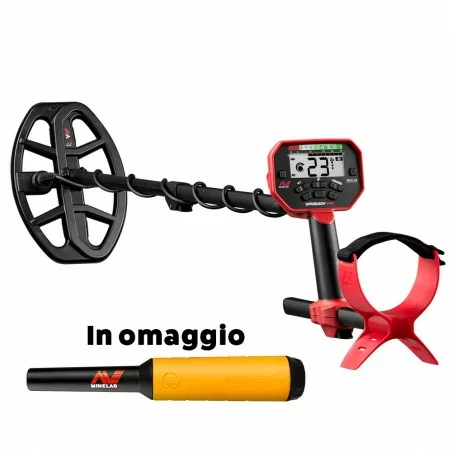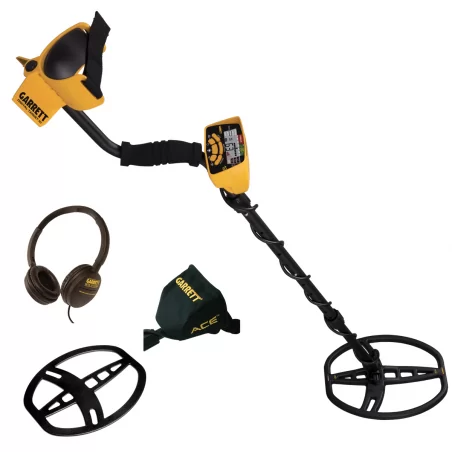.jpg)
Military research with a metal detector is an activity that has captured the attention of many history enthusiasts. It involves using specialized tools to locate military artifacts buried in the ground. In this article, where we have compiled all the most significant content we have covered over the years regarding this aspect of metal detecting, we will take you on a journey to discover this fascinating activity and reveal the secrets to becoming true experts in military research with a metal detector.
What is Military Research with a Metal Detector?
Military research with a metal detector is a practice that requires careful preparation and knowledge of the tools used. It's not just about strolling in search of military artifacts but following precise procedures to identify and recover objects. Enthusiasts of this activity must also be aware of the laws regulating the search and possession of military artifacts to avoid legal issues. The use of metal detectors has allowed the discovery of hidden objects and important historical findings, but it's crucial to remember that research must always be conducted with respect for cultural heritage and the surrounding environment.
If you are passionate about history, don't hesitate to embark on this adventure, but always remember that research should be carried out ethically and responsibly.
.jpg)
Some useful advice to start practicing Military Search
Before you begin, it's important to equip yourself with the right tool for the job. If possible, prefer a No Motion metal detector for tight spaces like trenches. Use a small and sturdy shovel with a quality pinpointer for precise excavation. Discriminate iron carefully to avoid overlooking interesting artifacts like helmets and bayonets.
In terms of safety, avoid digging at the center of the signal to reduce the risk of accidental collisions with possible explosives. If you encounter a potential explosive:
- Suspend the recovery
- Immediately report to the authorities
- Move away from the area before contacting the Carabinieri.
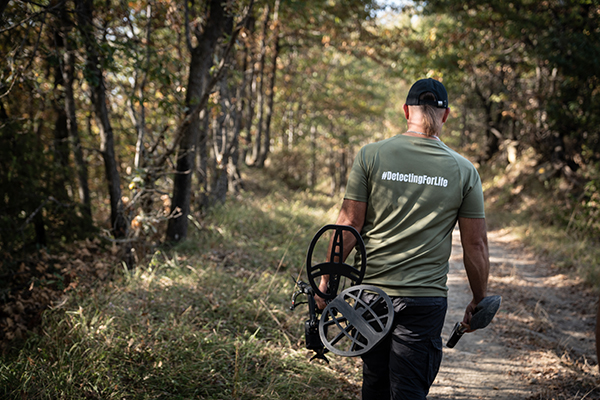
Furthermore, it's necessary to carefully study local laws regarding military research. Once you have chosen the place to explore, pay attention to any necessary authorizations to avoid legal problems. Finally, don't forget to bring the appropriate excavation tools to remove artifacts correctly and without damage.
With these useful tips, you are ready to start your adventure in military research!
Military research with a metal detector can be an exciting and rewarding experience, but it requires dedication and commitment. With the right advice and tools, you can unlock the potential of your passion for history and discover hidden targets. Don't hesitate to get involved and be amazed by the beauty of the artifacts you will find.
Military research is an exciting challenge and is waiting for you!
Let's get practical: Military research with Marcello Bonatti
Join Marcello Bonatti, a young explorer, as he practices military research. His discoveries reveal the courage of soldiers during World War I. Don't miss the video to travel back in time and discover moments from our past together.
Continues after the products...
Garrett ACE 250
Nokta Simplex Lite
Minelab Vanquish 440 with free Pro-Find 20
Garrett ACE 400i metal detector
Stories of ordinary searches and incredible finds
The discoveries made by amateur researchers using metal detectors have always been a source of great fascination and curiosity for many. Often, these enthusiasts manage to find objects of immeasurable historical value, bringing hidden and forgotten stories to light.
The discovery of Salvatore Svanoni's military tag
The discovery of Salvatore Svanoni's military tag was incredible. Gianclaudio Massa, a metal detecting enthusiast, was searching for something interesting in the province of Monza when his metal detector emitted a strong and clear signal. After a few minutes, he found a military tag belonging to an Italian soldier who fought during World War II. Massa managed to trace the soldier's identity and contact his family, returning a very precious object to them. This discovery demonstrates how the use of metal detectors can bring forgotten stories to light and return important items from the lives of loved ones to their families.
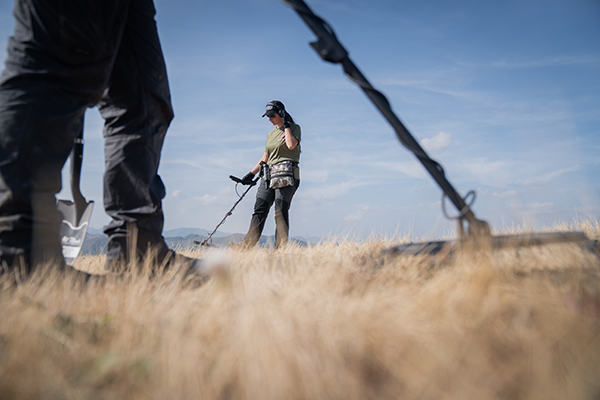
The finding of the remains of a German soldier in the Gothic Line
The finding of the remains of a German soldier in the Gothic Line was another incredible discovery made by a metal detecting enthusiast. The researcher was looking for interesting objects in the area when his metal detector signaled the presence of something underground. After digging, he found the remains of a German soldier who died during World War II. Thanks to collaboration with local authorities, the remains were examined by experts and identified. This discovery demonstrates how the use of metal detectors can help reconstruct the past and answer questions that have remained unanswered for decades.
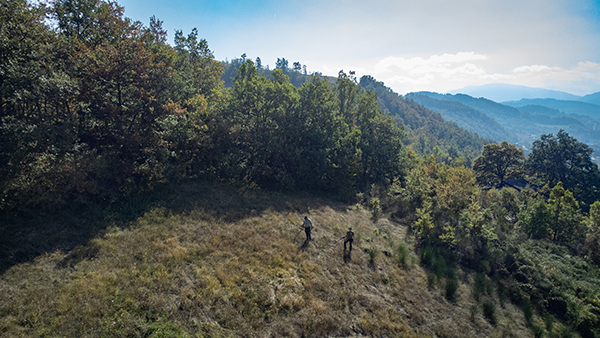
The recovery of an artillery grenade in the shooting range of Esenta
The recovery of an artillery grenade in the shooting range of Esenta was another extraordinary discovery made by a metal detecting enthusiast. A searcher was exploring the area when his metal detector signaled the presence of an unusual object. After digging, he found an artillery grenade dating back to World War II. Thanks to collaboration with the competent authorities, the object was removed, secured, and handed over to military authorities for analysis. This discovery shows how the use of metal detectors can also be useful for public safety, helping to detect dangerous or explosive objects still present in the area.
Italian regulations for military research with a metal detector
Military research with a metal detector can be a fascinating activity, but it requires great responsibility and compliance with current regulations. Only by following the rules and acting cautiously can you contribute to the enhancement of our country's historical and cultural heritage. However, it's essential not to underestimate the risks involved, so it's always advisable to rely on professionals or specialized associations to avoid accidents or sanctions.
Preserving historical memory
Military research can be a fundamental area for preserving historical memory. Through the study and documentation of past armed conflicts, it's possible to preserve the memory of people who fought and sacrificed their lives for the common good. The Gothic Line, for example, represents one of the most important testimonies of World War II in Italy. Thanks to the South African War Memorial in Castiglione dei Pepoli and the Museum of the Monti della Riva Gothic Line - Felix Pedro in Trignano, which we had the opportunity to talk about in our blog, you can relive the emotions and events of those dark days.
The Gothic Line and the South African War Memorial in Castiglione dei Pepoli
The Gothic Line is one of the most important places of memory of World War II in Italy. This defensive line stretched for over 300 km from the Adriatic Sea to Tuscany and represented the last frontier of German resistance against the Allies. The South African War Memorial in Castiglione dei Pepoli is one of the most significant places in the area. This museum commemorates the sacrifice of South African soldiers who fought on the Gothic Line during World War II. The Memorial was created thanks to the commitment of the Terra Nostra association.
The Museum of the Monti della Riva Gothic Line - Felix Pedro in Trignano and the Linea Gotica Officina della Memoria Association
The Museum of the Monti della Riva Gothic Line - Felix Pedro in Trignano is a place of memory and in-depth study of the history of World War II. This museum, managed by the Linea Gotica Officina della Memoria Association, is divided into different thematic sections that tell the story of the Gothic Line through photographs, relics, and period documents. In addition, the museum hosts biographical panels on the lives of soldiers during the war. The Linea Gotica Officina della Memoria Association is dedicated to promoting knowledge of the history of the Gothic Line by spreading stories and facts from the past. Thanks to their constant commitment, it's possible to preserve the historical memory of the Second World War and ensure that it is never forgotten. The Museum of the Monti della Riva Gothic Line - Felix Pedro represents a symbolic place that allows us to reconstruct the war events of our country and pay homage to those who sacrificed their lives for the freedom of our territory.
The museums related to militaria and the two World Wars that we have visited in recent years
If you are passionate about history and interested in getting to know up close the events that marked the world during the two World Wars, museums related to militaria are definitely a destination not to be missed. In recent years, we have had the opportunity to visit some, discovering unique artifacts and touching stories that have allowed us to relive those intense moments in history. Here is a selection of the museums we have encountered along our journey.
We tell you about Forte Corbin
Situated like a jewel on the Asiago Plateau, Forte Corbin was erected in 1906 to defend the Astico Valley from the Austro-Hungarian army before World War I. Designed to withstand attacks, especially artillery attacks, the fort soon lost relevance due to advanced military innovations. Occupied by the Austro-Hungarian army in 1916, it went through alternating phases during the war. After the conflict, it was used for observing enemy-occupied areas. In 1942, it was privately purchased, and thanks to the efforts of the descendants of the new owner, Forte Corbin has become a tourist destination with a museum of war relics recovered during the restorations.
The open-air museum of restored bunkers in Cervia
Walter Cortesi, known as "the bunker man", has recently received another recognition for his valuable historical research. Thanks to the work of his CRB 360° association's metal detectorists, Cortesi has returned to memory a significant part of history. The Municipality of Cervia decided to redevelop a portion of the promenade in Milano Marittima (RA) using granite evidence from the Second World War, recovered from bunkers built around 1943 by the German occupiers. In collaboration with the Municipality, Cortesi has restored some bunkers, transforming a stretch of the city into an outdoor historical museum. The result of several months of work was presented, including a real mortar bunker and reinforced concrete "dragon's teeth.
Detectorshop interviews: Experts speak
During our experience at Forte Corbin, we met Loris Giuriatti, Responsible for Conscious Recovery of the November IV Association, writer, teacher, and mountain guide. Loris told us the fascinating story of the "Recoverers" who, after the Great War, dedicated themselves to recovering war relics for resale as scrap metal. He also mentioned the "Cartuccia", an emblematic figure from the First World War, and provided valuable information on the current regulation of metal detector research in the Venetian areas involved in the wartime clashes.
Speaking of wartime history, during World War II, the need for new airports led to constructions along the Adriatic coast. Cesenatico, for example, saw the construction of a "Landing Ground" on the Ponente beach in November 1944. The Walter Cortesi War Research Committee, known as CRB 360°, discovered the remains of this airport, which hosted the Martin Baltimore and De Havilland Mosquito of the 253rd Wing. CRB 360° specializes in military archaeology, researching war relics using metal detectors, contributing to retracing the history of Cesenatico's military airport.

